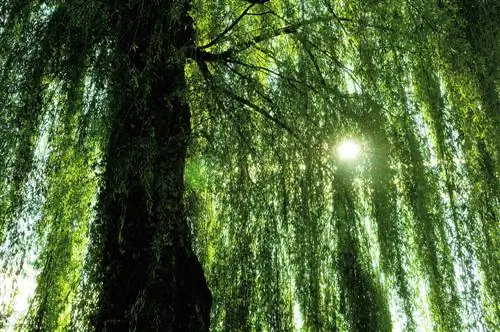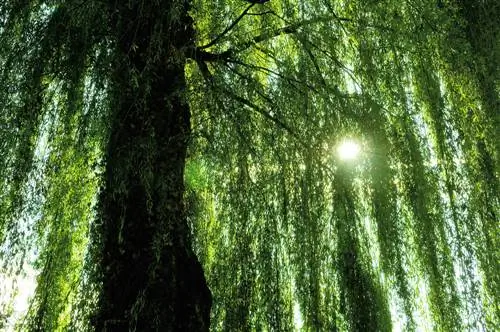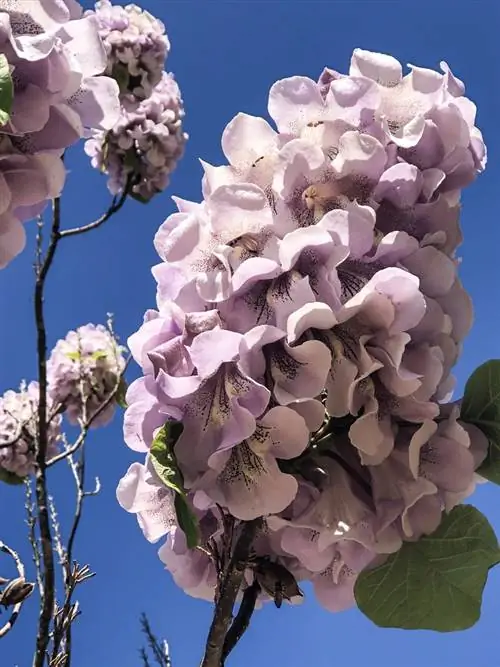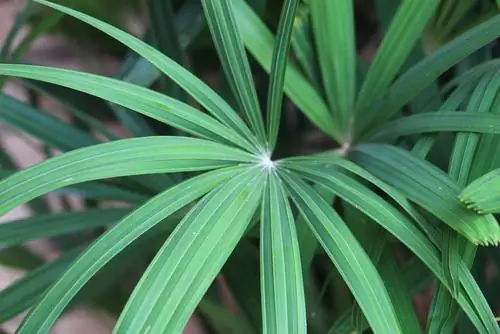- Author admin [email protected].
- Public 2023-12-16 16:46.
- Last modified 2025-01-23 11:21.
They decorate roadsides, fortify embankments and are even at home as ornamental trees in private gardens: here in Germany alone the willow occurs in eight different species. The deciduous tree is not only very popular because of its beautiful growth habit and velvety flowers in the shape of small catkins. Its flexible branches are ideal for creating handmade products. It's always worth paying closer attention to the properties of the willow. You will find interesting information in this profile.

What properties does the willow have as a tree?
The willow (Salix) is a deciduous tree that occurs in around 300 species, around 8 of which are native to Germany. Reaching heights of 10 to 30 meters, it can live 40 to 80 years and is known for its flexible branches, fluffy catkin flowers and versatile uses.
General
- Latin name: Salix
- Genus: Willow family (Salicaceae)
- Tree type: deciduous tree
- Number of species: around 300
- Number of species native to Germany: about 8
- Height: 10 to 30 meters
- Age: 40 to 80 years
- also occurs as a shrub
- forms numerous hybrids
Appearance
Leaf
- Shape: narrow, round or lanceolate
- Color: light green
- Underside mostly hairy
Bark
- Structure: cracked
- Color: brown or gray
- soft wood, very flexible, fibrous, tough, red or white
- Tree trunk is often hollow
Fruits
- Fruit shape: capsule fruit
- Length: approx. 1 cm
- ripe after 4 to 6 weeks
- contain several seeds
- rapid seed formation
Bloom
- Flowering time: from March to May
- separate sex (dioecious)
- fluffy kittens
- male flowers: thick, egg-shaped, striking yellow
- female flowers: cylindrical, greenish
- Pollination: wind and insects
Distribution and occurrence
in the entire northern hemisphere with the exception of Scandinavia
Location requirements
- Lighting conditions: sunny
- Soil: moist to wet
Usage
In medicine
- Bark is brewed for tea
- contains lots of tannins
- contains large amounts of salicin (active ingredient in aspirin tablets)
- antipyretic
- pain relieving
- helps against rheumatism
- Leaves have a diuretic effect
Manufacturing and Industry
- as slope reinforcement in engineering biology
- Twigs are used as material for weaving such as baskets (especially in fishing)
- for roofing
- Leaves are used as animal feed
- Firewood
- Cricket bat
Botany
- as a bee pasture
- as a solitary tree
- as Bonsai
- in the bucket
- as an avenue tree
- in parks
- for bank reinforcement
Other
Symbolism
- Easter bush (palm catkins are reminiscent of palm fronds)
- in China a symbol of spring and fertility






